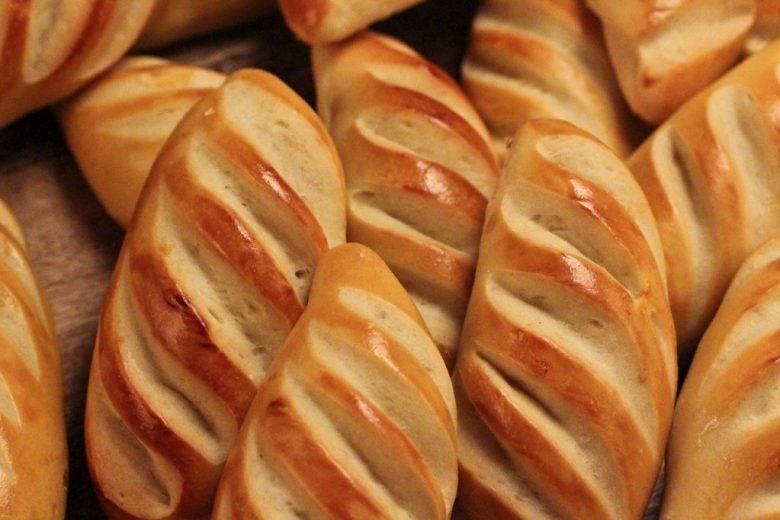Butter Dwarfs
The fine, inimitable taste of butter defines the taste of enriched yeast doughs. But since the handling of butter when making dough is not always correct, I would like to give some pointers.
When to add butter depends on various factors such as the recipe, the amount added, the consistency of the dough and the type of machine. In order to achieve a quick and optimal dough structure, the addition should take place after the first 2-4 minutes of mixing time. The delayed addition of butter results in a dry and elastic dough structure. The yeast activity of the main dough is also influenced, which accelerates the subsequent dough production steps.
In order to get an optimal result in the dough, the butter should be used from the refrigerator at 5°C and cut into small pieces. With this butter temperature you achieve:
- Optimal binding of the dough with the butter, because the consistency of the dough and the butter are the same.
- Dry dough surface.
A butter temperature of 24°C causes the following:
- The soft butter causes the dough to break apart
- Greasy dough structure, which increases the dough development time.
- From the prolonged kneading time the risk of over-kneading increases
COMMERCIAL PRODUCTION
It takes 23-24 liters of milk to produce 1000g of butter. Butter contains 82% fat, 16% water, 0,7% protein (80% casein, 20% albumins and globulins), 0,7% carbohydrates (lactose).
TEA BUTTER
- First quality sweet- or sour cream butter
- For spreading, dough, creams, cold dishes, …
TABLE BUTTER
- Low quality production butter
- For doughs, cooking, etc.
HERB BUTTER
- Tea butter with added herbs and salt
- For warm or cold dishes
SUMMER BUTTER
- The milk is obtained during the green feeding period. This gives the butter a strong color and a higher content of vitamins and unsaturated fatty acids than winter butter
- Good spreadability
- Use like tea butter
BUTTER FAT
- Intense taste and long shelf life
- For cooking fat, dough, masses, …
- Clarified butter can be heated to a higher temperature as it does not contain any protein, carbohydrate or water components! Clarified butter is obtained by “cooking out” butter.
Recipe
For a dough weight of 916g / 23 pieces, each 40g of dough
Poolish:
- 125g Wheat flour Type 700
- 125g Water 15°C
- 1g Yeast
Hydration(TA): 200 Maturity time: 16-24 hours at 4°C in the refrigerator
Main dough:
- 251g Mature poolish
- 375g Wheat flour Type 700
- 140g Milk
- 75g Butter
- 40g Brown sugar
- 20g Yolk (1)
- 10g Salt
- 5g Yeast
DT: 25°C Mixing time: 6 min. slowly/ 5 min. fast
Mix all ingredients except butter for 3 minutes. Then add the butter and mix a further 3-4 minutes on slow.Then the dough is kneaded quickly for about 5 minutes. After kneading, cover the dough and let it rest for 30 minutes.
Using a dough card, divide the dough into 40g pieces and roll into round dough balls. In order to get a smooth surface when shaping, the dough pieces should not rest for longer than 15 minutes.
Shape the dough pieces into pointed rolls and set on a baking tray with the seam-side down. After shaping the dwarfs are brushed with egg.
When half proofed, brush again with egg and let the surface dry in a drafty spot. As soon as the surface has dried, these are cut crossways several times with a sharp knife.
After scoring, let them briefly rest and then bake at 210°C / 10-12 minutes until golden brown.








